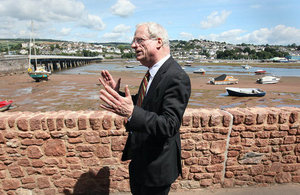Extreme weather number one challenge facing the nation
The winter floods have highlighted the danger of building on floodplains, the Environment Agency Chairman told this week’s CIWEM conference.

Environment Agency Chairman Lord Chris Smith
Britain’s wettest winter for 250 years also underlines the need to continue improving flood defences to cope with future extreme climate, he said in a keynote speech.
In addition, there needs to be a continued commitment from Government and partners to investing in flood defence maintenance, more widespread use of individual property flood protection measures and a higher priority given to flood risk in national infrastructure planning, he added.
Speaking to a packed audience at the Royal Geographical Society, Lord Smith said:
More frequent extreme weather is the number one challenge facing the nation. The climate will throw more at us in the future and we need to be even better prepared.
Lord Smith said he was extremely proud of Environment Agency staff who had worked night and day from December to February to run pumping stations, deploy defences, co-ordinate information for the emergency services, issue warnings and clear blockages from rivers “often in challenging conditions”.
Government response
As a result, he said, while around 7,000 properties had flooded during the stormiest spell of weather to hit the UK for over two decades, over 1.4 million had been protected – along with 2,500 square kilometres of farmland.
The Chairman welcomed the additional £130 million and £140 million the Government had committed for repairs and additional maintenance. But, he said, in the South East groundwater levels would remain high in certain areas into May, even with normal rainfall levels and that the immediate task is to repair damaged defences.
Looking ahead, Lord Smith added
The Environment Agency, working with communities and partners was key to increasing long-term resilience to flood risk.
This approach is already having real benefits in the Calder Valley, where flash flooding in summer 2012 affected 900 households and 250 businesses and the Environment Agency, local authority and flood wardens are working to understand how collective data, information and intelligence can be combined with technology to provide the community with more time to prepare for flooding.